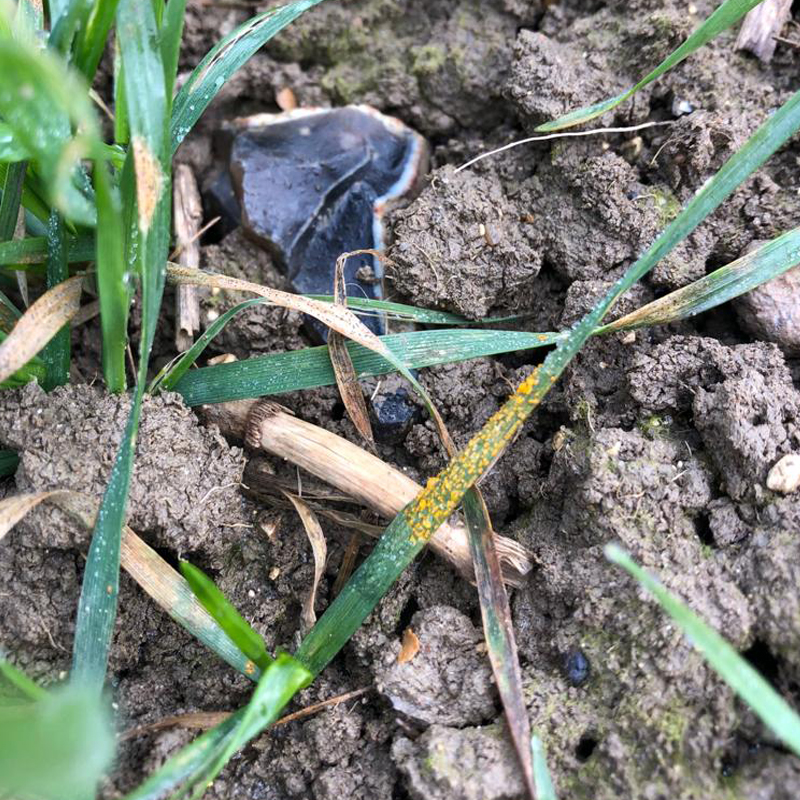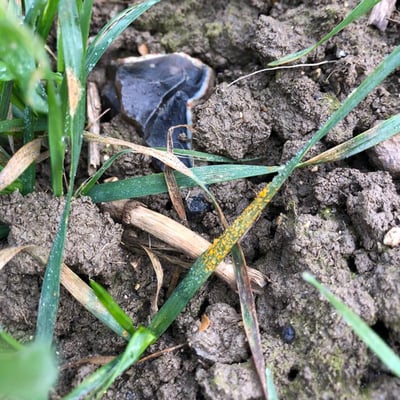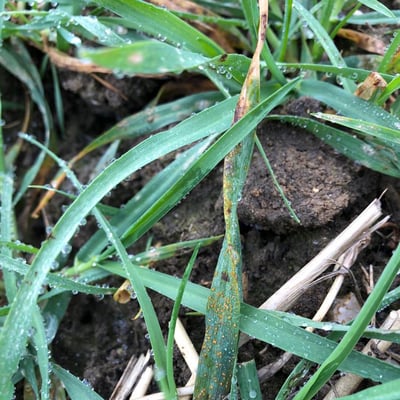2019 - Regional round-up: an early season look at crops across the UK

In this week’s hub update we’re taking a look back at how and when crops were drilled in the autumn, how they’ve fared over the winter and what the main pressures are as spring approaches.
The regions covered are:
East Anglia
 Chris Stockdale, Regional Agronomy Manager
Chris Stockdale, Regional Agronomy Manager
Crop establishment conditions were ideal across the Eastern Counties last year: we enjoyed an open autumn with prolonged dry conditions (one of my growers in Bedfordshire reported just 36mm of rain in September followed by 62mm in October, and soil temperatures remaining has high as 10oC into the last week October) which meant growers were able to pick and choose when to drill.
Many growers elected to drill their crops at their usual timings but there was also a definite shift towards later drilling, with an increasing number of growers delaying drilling until early or mid-October to tackle the black-grass challenge. This tactic has worked well for most with growers reporting good levels of black-grass control, although a few are reporting that some later drilled crops are looking noticeably thinner at present due to the lack of moisture. The drier autumn conditions also resulted in a noticeable shift towards min-till, especially in Norfolk where the plough has traditionally remained dominant.
Conditions during the winter months have been very mild with lower than average rainfall. Crops have continued to grow and are currently looking very lush, with the most forward fields currently at GS23. Any mildew or net blotch infections have mostly been checked by the winter’s light frosts, but there are signs of active brown rust infections and also of septoria developing. With this in mind, a well-timed T0 treatment, with a robust PGR, will be essential this spring. Some fresh phoma infections are also being reported, but it is now (hopefully) too late for these to cause cankers.
In terms of pest damage, slugs have caused relatively little harm, but many crops of oilseed rape have been decimated by Cabbage Stem Flea Beetle damage. The lack of any meaningful hard winter weather also means the aphid threat to beet crops remains high.
The biggest threat going forwards will be an excessively dry spring or summer: with very little winter rainfall (as little as 27mm in January in Bedfordshire) we could soon fall into drought conditions which could severely compromise yields. In terms of disease pressures, mildew, yellow rust and brown rust are the biggest threats, while black-grass remains the most prevalent weed threat.

Some spring barley and spring beans have already been drilled (with some crops in Bedfordshire going in during January), but, given the ground conditions, the total spring area sown to date is surprisingly small. No doubt we’ll see a little more activity in the next 5-10 days (when soil temperatures reach the magic window of 8-10oC) and we’re also likely to see growers making early season N applications and pre-drilling sprays in the next week or so. Nitrogen applications are less urgent on heavier soils which are still retaining some residual nutrients which means the crops on this ground are looking a lot less hungry. Growers are also starting to apply P&K and manganese on very light land where there are some early signs of deficiency.
The North and North Midlands
 Will Nicholls, Regional Agronomy Manager
Will Nicholls, Regional Agronomy Manager
As a result of the favourable autumn conditions following last year’s harvest, some well-established cereal crops can be found across the region.
Some barley crops have just started to look a bit yellow and in need of nutrients, but I’m assured that growers are intending to make their first early season fertiliser applications within the next couple of weeks.
Disease levels in wheat and barley crops are currently quite low, but it’s not too difficult to find evidence of septoria or mildew, with the odd rust pustule also present. With warmer (and potentially wetter) weather on the horizon, these infections could quickly become a key focus for growers, especially where crops are particularly thick. However, at present, it seems the main cause of concern for many growers in the region is an abundance of pigeons in oilseed rape.

Spring drilling has not yet got underway in any earnest – due to a recent snap of cooler weather and correspondingly low soil temperatures – although many growers have started to prepare their ground in anticipation of drilling starting shortly. Again, a warmer spell of weather may see a surge of activity, but it is still a bit too early for any real progress to be made.
In terms of rotational patterns and cropping strategies, winter cereals seem to be dominating favour: this follows uncertainty after the 2018 harvest where the performance of some spring-sown crops, especially barley, failed to excite. As a result, many growers have opted for a second winter wheat. In addition, there’s been a significant resurgence of oats compared to recent years, with this now proving to be a popular alternative crop in the rotation.
The South and South Midlands
 Matthew Martin, Regional Agronomy Manager
Matthew Martin, Regional Agronomy Manager
The autumn drilling window was dry for the most part across the South and South Midlands, with just the occasional spell of heavy rain coming in short, one to three day bursts. These favourable conditions meant many crops were drilled ahead of schedule into well-prepared seedbeds, with a large proportion of farmers electing to make the most of the good conditions by drilling as soon as they could – in some cases to make sure they weren’t the last in the locale to get drilled up, in other cases simply to make sure they were finished before any really heavy autumn or winter rains arrived.
Despite opting not to delay drilling as a means of tackling the black-grass burden, most crops were successfully drilled into stale seed beds – a factor which also helped to reduce disease pressures in the autumn. In high blackgrass pressure areas, there has been a noticeable increase in the number of growers electing to use min-till or no-till crop establishment techniques.
During the winter months the weather across the region was generally very mild with just a few heavy frosts. The only significant wintry conditions came in early February when central Oxfordshire and southern England experienced several inches of snow. This was short-lived however and was soon followed by much milder daytime temperatures and cool nights which melted the snow relatively quickly, thereby limiting the weather’s impact on the rate of crop growth.
As a result, winter cereals throughout the south are generally looking good, with some early crops already well advanced. Winter oilseed rape crops have started to show some encouraging signs of recovering from damage caused by Cabbage Stem Flea Beetle, pigeon damage and drought damage, with the majority of crops currently at around eight leaves. For those crops which are still struggling to show significant re-growth, the challenge for growers and agronomists will be to select the appropriate rate of herbicide for weed control.
In terms of disease pressures, powdery mildew is evident in wheat and barley. Likewise, septoria is just starting to show in wheat, while low levels of phoma and light leaf spot have recently become visible in oilseed rape. The mild daytime temperatures, cool nights and infrequent rain showers that are currently being experienced across the region are likely to increase these disease pressures. A few growers and agronomists have taken these early disease signals as a prompt to stock up on a range of fungicides, but by and large most people seem fairly relaxed about the state of affairs at this stage.
Some spring drilling has already taken place, but this has largely been limited to lighter soils and the more southerly and easterly extremes of the region. As we move further into February it’s expected that work rates will increase significantly with growers further to the west starting to prepare the ground for imminent drilling.
 United Kingdom
United Kingdom Select country
Select country




